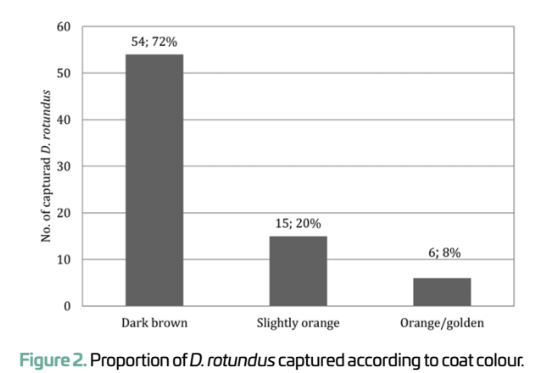Ecobiology of haematophagous bats captured in Juruti municipality, Lower Amazonas, Para state, Brazil
DOI:
https://doi.org/10.21708/avb.2024.18.4.12400Resumo
Among the 1.200 species of bats belonging to the order Chiroptera, only Diaemus youngi, Diphylla ecaudata and Desmodus rotundus are haematophagous, with D. rotundus being the most commonly found and having the most widely studied and understood biology. This species feeds on the blood of birds and mammals, including humans. To understand the ecobiological characteristics of haematophagous bats in the Municipality of Juruti, Lower Amazonas, Pará State, Brazil, bats were captured while feeding in 2013 and 2014 from solid ground and riparian regions. A general sampling of 371 hours resulted in 75 captured individuals of D. rotundus, including 26 adult males and 49 adult females, and 4 adult male D. youngi. Of these, 56 (75%) D. rotundus individuals were captured in solid ground regions and 19 (25%) in riparian areas. D. rotundus often attacked cattle, horses, goats, pigs and birds, rarely attacked dogs and occasionally attacked people. The region’s D. rotundus colonies were observed to consist of small groups of individuals, and the D. youngi is a species that has low participation in animal attacks in the Municipality of Juruti when compared with D. rotundus.
Downloads

Downloads
Publicado
Edição
Seção
Licença
Copyright (c) 2024 Acta Veterinaria Brasilica

Este trabalho está licenciado sob uma licença Creative Commons Attribution 4.0 International License.
Autores que publicam na Acta Veterinaria Brasilica concordam com os seguintes termos: a) Autores mantém os direitos autorais e concedem à revista o direito de primeira publicação, com o trabalho simultaneamente licenciado sob a Licença Creative Commons Attribution que permite o compartilhamento do trabalho com reconhecimento da autoria e publicação inicial nesta revista. b) Autores têm autorização para assumir contratos adicionais separadamente, para distribuição não-exclusiva da versão do trabalho publicada nesta revista (ex.: publicar em repositório institucional ou como capítulo de livro), com reconhecimento de autoria e publicação inicial nesta revista. c) Autores têm permissão e são estimulados a publicar e distribuir seu trabalho online (ex.: em repositórios institucionais ou na sua página pessoal) a qualquer ponto antes ou durante o processo editorial, já que isso pode gerar alterações produtivas, bem como aumentar o impacto e a citação do trabalho publicado (Veja O Efeito do Acesso Livre).


 Esta obra está licenciada com uma Licença
Esta obra está licenciada com uma Licença 